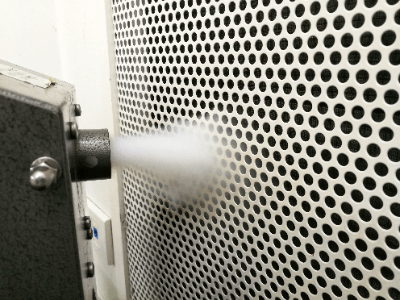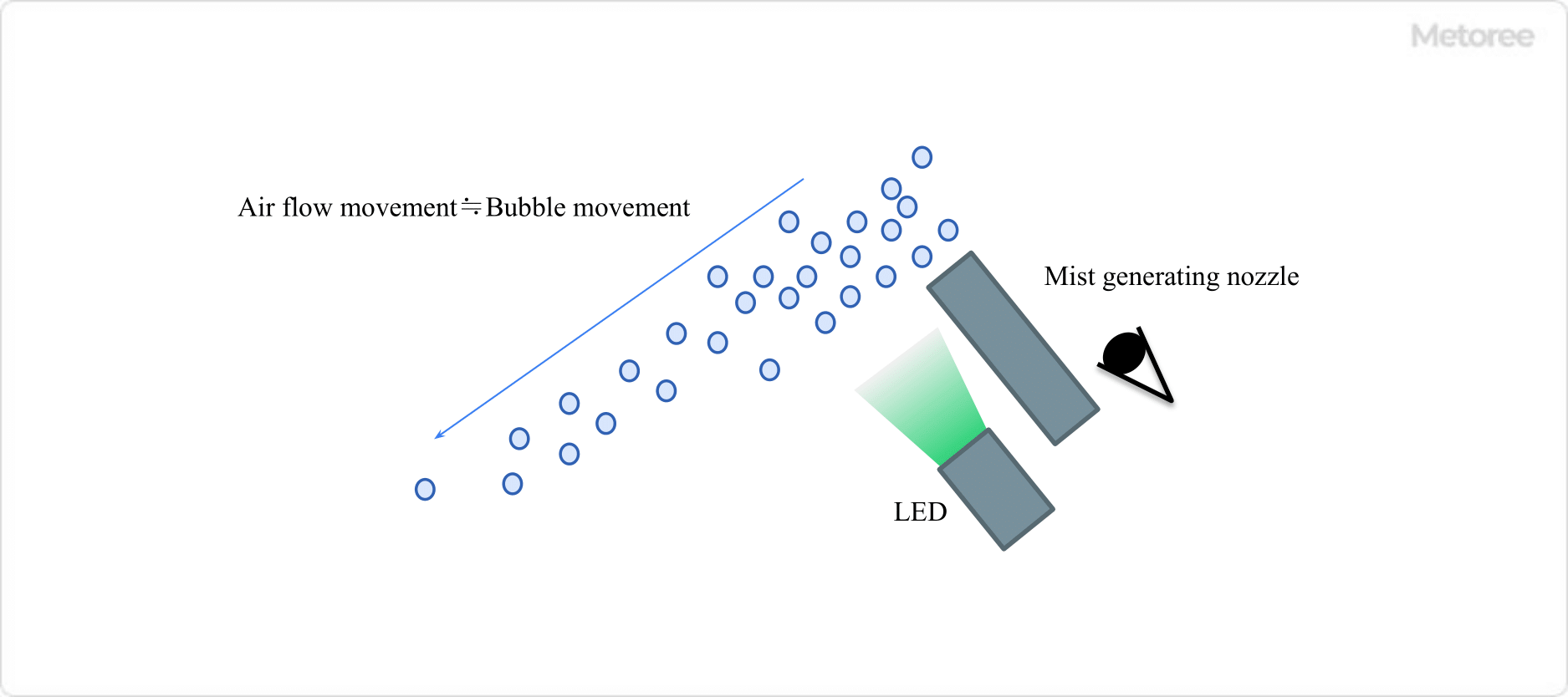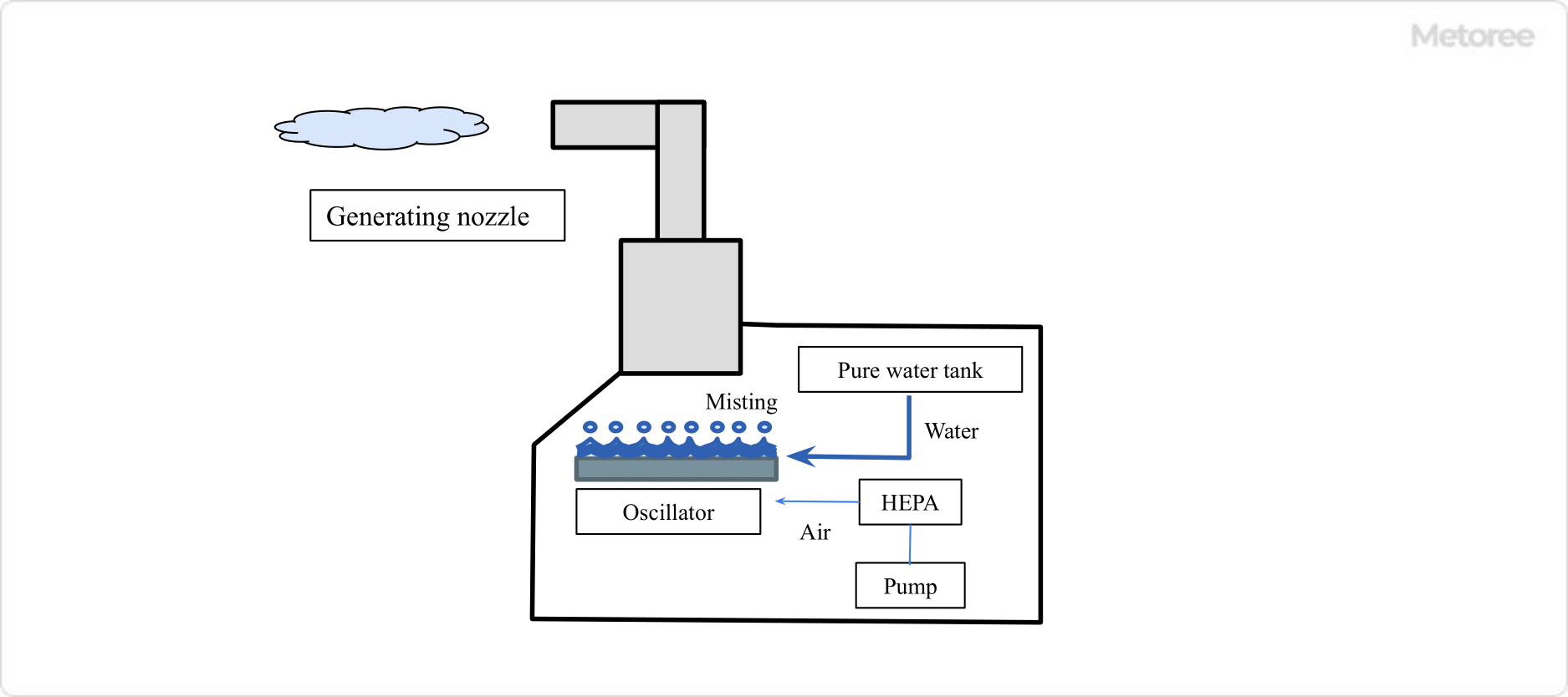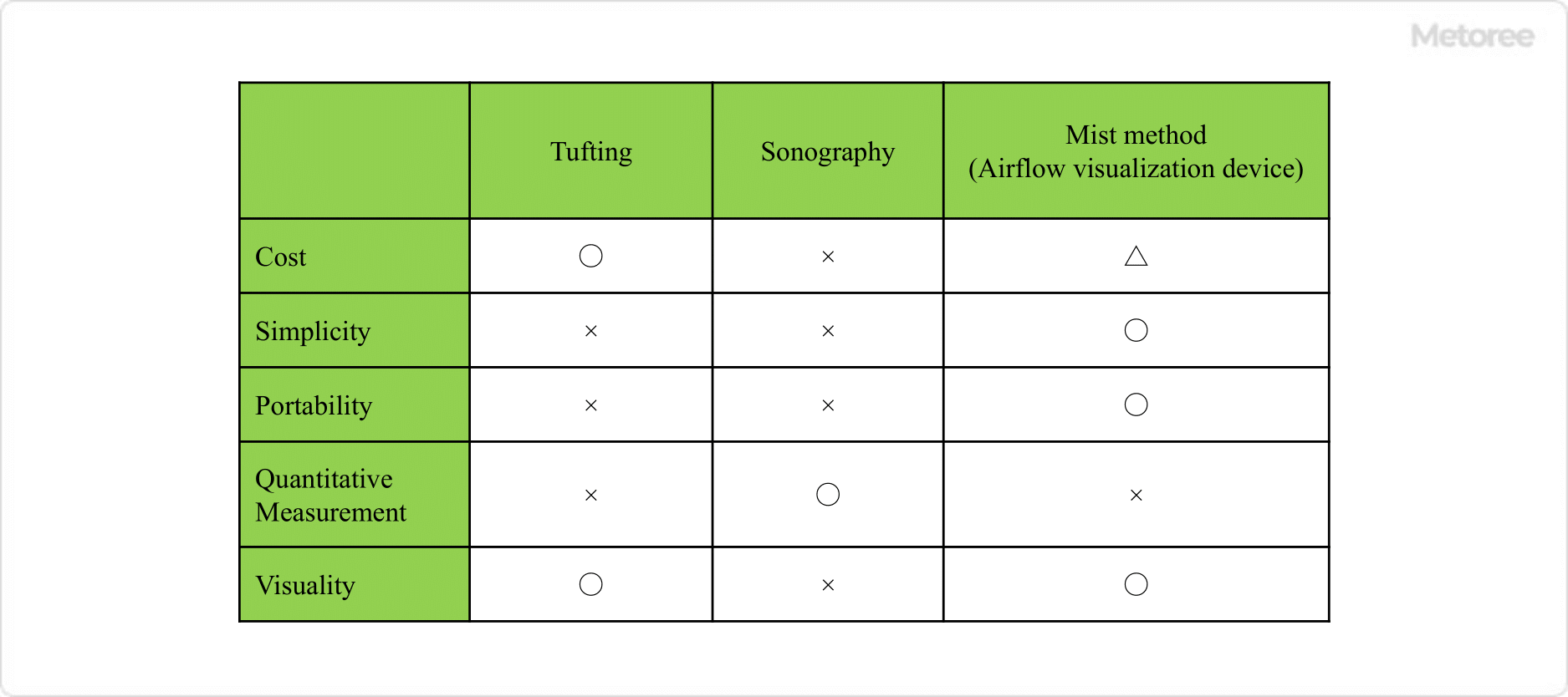All Categories
History












This section provides an overview for airflow visualization devices as well as their applications and principles. Also, please take a look at the list of 31 airflow visualization device manufacturers and their company rankings. Here are the top-ranked airflow visualization device companies as of January, 2026: 1.Lighthouse worldwide solutions, 2.Applied Physics, Inc., 3.TSI, Inc..
Table of Contents
Categories Related to Airflow Visualization Devices
 An airflow visualization device is a device that generates a mist of pure water in the form of a fine mist and observes the mist as it moves with the movement of the airflow to enable visual confirmation of airflow conditions.
An airflow visualization device is a device that generates a mist of pure water in the form of a fine mist and observes the mist as it moves with the movement of the airflow to enable visual confirmation of airflow conditions.
Gas visualization devices that are compatible with pure water do not require smoke or particles that could cause contamination, and are harmless to humans and machines because they use pure water and clean air. Therefore, it can be safely used in hygienic environments such as clean rooms.

Figure1. Overview of airflow visualization system
The speed at which mist airflow is generated is varied according to the application of the gas to be checked. Also, by adjusting the airflow rate at which the mist is sent out by a fan to minimize its effect on the airflow in the space, it is possible to expel the gases to be checked efficiently and visualize them more clearly.
Airflow visualization devices are used to check the airflow in a specific space. Specifically, it is used to identify the cause of defects, to check the turbulence and differential pressure in a room, and to check for backflow.
It is also used to check for upward airflow near heat sources. Generally, gas flow in the air cannot be seen. However, airflow visualization devices can be used to visually check the flow of gases in a space.
The device can also be used in sanitary environments, such as clean rooms, to check for airflow puddles or dust puddles caused by obstructions.

Figure 2. Principle of airflow visualization system
An airflow visualization device consists of an ultrasonic generator unit, a fan, a nozzle, a pure water tank, and other components. Ultrasonic waves generated by the ultrasonic generator unit cause vibrations that turn deionized water into a micrometric fine mist.
The mist is then pushed out by a fan, which sends the generated mist through the nozzle into the space. By adjusting the frequency of the oscillator, the particle size of the mist can be controlled. The mist is produced large enough to be seen with the eye, but small enough not to affect the flow.
Airflow visualization devices do not use smoke or particles that have some component in the substance they release into the air. Since it uses mist made of pure water in an atomized form, it can be used without worrying about contamination. In addition, because it passes through a HEPA filter, there are no foreign particles from the pump.

Figure 3. Airflow Visualization Techniques
In addition to airflow visualization devices, other airflow visualization methods include the tuft method and the ultrasonic method.
Taft Method
In the tufting method, a thread or other object is inserted into the flow and its behavior is used to investigate flow patterns, such as flow direction, non-stationary, and the existence of separation areas. This method is suitable for measurements in areas inaccessible to the human hand.
Ultrasonic Method
The ultrasonic method uses ultrasonic waves to measure flow velocity distribution by detecting Doppler signals from reflective objects in the fluid. It is a method that can quantify the flow field in a non-contact manner, but it is expensive and still has some usability issues.
All methods have their advantages and disadvantages, but airflow visualization devices (mist method) are relatively easy to use, portable, and can be used to take measurements as soon as they are within reach.
The particle size of the mist emitted by an airflow visualization device ranges from a few micrometers to 5 micrometers. Since it is difficult to see the mist in dark places, a bright light source is required. A powerful laser or LED light source is recommended.
In addition, the visibility may vary depending on the color. Most commercially available products are green, which is easy on the eyes and highly sensitive. Adding color may have the opposite effect if the brightness itself is reduced, so trial and error is recommended. The impression will vary greatly depending on the angle at which the light is shining and other factors.
In addition, if you want to record the flow field with a camera, you may need to make some adjustments to the camera as well. Recently, there is a technique called PIV, which attempts to quantify the flow field by combining video from a camera and image analysis. Although this method is not applicable to all cases, it is effective in some cases and should be considered.
*Including some distributors, etc.
Sort by Features
Sort by Area

Aerolab, founded in 1947 and headquartered in Jessup, Maryland, USA, is a manufacturer that specializes in custom wind tunnel design. Its product range includes wind tunnels for aerodynamic research, balances for measuring forces on wind tunnel models, smoke generators for flow visualization, model positioning systems for precise model attitude adjustments, and data acquisition systems for collecting and analyzing wind tunnel test data. Additionally, the company provides comprehensive support services encompassing design & analysis, fabrication, and installation, ensuring a holistic approach to its wind tunnel solutions.

TSI, Incorporated, established in 1961, is based in Minnesota, United States, as an industrial machinery manufacturer. Its specialization is manufacturing a wide range of products, including anemometers, velocimeters, aerosol research instruments, air velocity transducers, and air velocity meters. It also manufactures flowmeters, particle counters, filter test systems, and respirator fit testers. The company has patented several products, such as the aerosol neutralizer model 3088 and the velocimetry system. It also acquired several ISO certifications, including ISO 9001:2015, ISO/IEC 17025:2017, and ISO 14001:2015 certifications. Its manufactured products cater to aerosol, air monitoring, biomedical, engine, and vaporization across the US, Europe, and Asia.

Lighthouse Worldwide Solutions, founded in 1982 and headquartered in Fremont, California, is a manufacturer and supplier of real-time contamination monitoring systems and airborne particle counters. The company offers a complete line of contamination monitoring solutions, including airborne particle counters, microbial samplers, liquid particle counters, and temperature/humidity sensors. These products ensure cleanliness verification and detect environmental contaminants in semiconductor, pharmaceutical, healthcare, aerospace, and among other industry plants worldwide. The company also offers various services, including technical support, request catalogs, and customization. The company is also honored with the "Cleanroom Supplier of the Year" award.






Sanyo Denki Co. Ltd. is based in Tokyo, Japan, and is an ISO 9001-certified electronics manufacturer that was originally founded as Sanyo Shokai in 1927 before being rebranded in 1942. The company produces electronic systems and components for use in industrial devices or facilities. These include uninterrupted power supply (UPS) units, servo motors, and cooling fans used in computer coolers. The company’s products are primarily used by clients in the renewable energy, automotive manufacturing, and healthcare sectors.

Mitsubishi Electric was established in Japan in 1921 and headquartered in Tokyo. The company’s Semiconductors & Devices division is a manufacturer of products serving several industries ranging from home appliances and automotive to renewable energy and optical fiber communication. The company’s products are divided into 4 product segments: power devices, high-frequency devices, optical devices, and infrared sensors. Power devices encompass motion controls, most home appliances, and SiC applications. High-frequency devices include satellite communications systems, radios, and base transceiver stations. Optical devices include projector light sources and optical fiber communication. Infrared sensing systems include MeIDIR thermal sensors.


Shin Nippon Air Technologies Co., Ltd. (SNK), founded in 1969 with headquarters in Tokyo, Japan, is a manufacturer of fine particle visualization systems. The company's product line includes a particle visualization device that combines a camera for FPVS that is equipped with high-speed image processing technology, a laser light device that produces a uniform and far-reaching light sheet for FPVS, and an LED light source device that is used for visualizing the floating behavior of foreign substances during surface adhesion. These products are used for airflow visualization with a minimal amount of tracer mist or smoke.












LaVision, founded in Germany in 1989, is a supplier of laser imaging systems. The company offers a comprehensive range of laser imaging systems designed for application fields like fluid mechanics (aerodynamics, microfluidics), combustion (automotive, power generation) as well as spray and particle diagnostics (engines, pharma). It also provides camera based material testing (DIC/DVC) systems and in-cylinder infrared-sensors. Its products are employed in medical diagnostics and imaging applications, including X-ray and CT scan equipment, offering high-resolution image capture.

Air Clean Deviser Taiwan Corp., in China in 1993, is a supplier of cleanroom equipment. The company's product portfolio includes fan filter units, air showers, pass boxes, clean booths, and clean hand washers. Its products are used in healthcare facilities, including hospitals and laboratories, to maintain sterile environments for patient safety and research, development, and production in the pharmaceutical and biotechnology industries. It has more than 4,000 customers and 36 certifications such as UL, CE, ISO 9001, ISO 13485, and ISO 14001.

AS ONE Corporation, established in 1962, is a Japanese supplier of laboratory instruments and consumables, headquartered in Nishi Ward, Osaka. Through their website, AXEL GLOBAL, the company offers a selection of 3 million products. These include physical and chemical science instruments such as universal and measuring instruments, as well as laboratory instruments for cultivation, separation, and analysis. They also provide research facility equipment such as storage equipment and laboratory chairs. AS ONE extends its offerings to include industrial instruments like dehumidifying storage and organization and conveyance equipment. Additionally, AS ONE serves the healthcare sector with products for hospitals and nursing homes.
Ranking as of January 2026
Derivation Method| Rank | Company | Click Share |
|---|---|---|
| 1 | Lighthouse worldwide solutions |
11.2%
|
| 2 | Applied Physics, Inc. |
9.3%
|
| 3 | TSI, Inc. |
9.3%
|
| 4 | Aerolab |
8.4%
|
| 5 | Acumen Technology |
7.6%
|
| 6 | Microrite, Inc. |
4.8%
|
| 7 | PERFORMANCE VALIDATION |
4.5%
|
| 8 | Cleanzones Pte Ltd |
3.9%
|
| 9 | SANYO DENKI CO., LTD. |
3.9%
|
| 10 | Mitsubishi Electric Corporation |
3.7%
|
Derivation Method
The ranking is calculated based on the click share within the airflow visualization device page as of January 2026. Click share is defined as the total number of clicks for all companies during the period divided by the number of clicks for each company.Number of Employees
Newly Established Company
Company with a History
*Including some distributors, etc.
*Including some distributors, etc.
| Country | Number of Companies | Share (%) |
|---|---|---|
 United States of America
United States of America
|
8 | 33.3% |
 Japan
Japan
|
3 | 12.5% |
 India
India
|
3 | 12.5% |
 Germany
Germany
|
2 | 8.3% |
 Taiwan
Taiwan
|
2 | 8.3% |
 United Kingdom
United Kingdom
|
2 | 8.3% |
 Singapore
Singapore
|
1 | 4.2% |
 Republic of Korea
Republic of Korea
|
1 | 4.2% |
| Egypt | 1 | 4.2% |
 Australia
Australia
|
1 | 4.2% |
28 products found
28 products
FUKUDA CO., LTD.
620+ people viewing
Last viewed: 5 minutes ago
FMZ-1063 is a flow tester with a built-in mass flowmeter. High accuracy ±3.5%ofR.D.±1digit (normal flow rate area). Realizes time saving function (...
MSJ Soken Co., Ltd.
300+ people viewing
Last viewed: 1 day ago
■Summary ・We process images from an ultra-compact, high-sensitivity, high-resolution black-and-white CCD camera with 10 bits (1,024 gradations) an...
NCC Co., Ltd.
680+ people viewing
Last viewed: 22 hours ago
Overview ■Using pure water, it is possible to visualize airflow without polluting the clean environment. Although it is small and lightweight, it g...
NCC Co., Ltd.
610+ people viewing
Last viewed: 14 minutes ago
Overview ■Portable airflow visualization device that can generate fine water vapor anywhere In order to visualize airflow in a clean room, it is ne...
NCC Co., Ltd.
690+ people viewing
Last viewed: 6 hours ago
Overview ■Visualize invisible airflow at low wind speeds in three dimensions The WA-790 indoor ultrasonic anemometer uses a 3-axis ultrasonic senso...
Irie Co., Ltd.
580+ people viewing
Last viewed: 1 day ago
■Summary Easily visualize and dataize wind direction and speed, which is a time-consuming process. anemolink is an IoT sensor that combines electro...
SANYO DENKI CO., LTD.
550+ people viewing
Features ■You can select the optimal fan for your device. By using the measurement results for simulations such as thermal design, you can easily a...
Hodaka Co., Ltd.
450+ people viewing
Last viewed: 1 day ago
Soot Concentration Meter HT-1850 Smoketester Evaluates the degree of smoke in flue gas from flue pipes and checks combustion efficiency. ■Work pro...
Matsuda Tsusho Co., Ltd.
390+ people viewing
Concept Colt4 is a compact and easy-to-use smoke machine that generates smoke using a special aerosol can. Smoke is water-soluble and non-toxic, an...
Matsuda Tsusho Co., Ltd.
420+ people viewing
Last viewed: 9 hours ago
Concept ViCount Compact is a smoke machine that uses special oil and carbon dioxide to produce high-quality smoke for a long time. The oil componen...
Central Scientific Trading Co., Ltd.
550+ people viewing
Last viewed: 22 hours ago
■Summary CRF6 uses purified water, etc., and generates water vapor droplets of 5-8 um with 35 ultrasonic transducers to visualize airflow. It is ea...
Central Scientific Trading Co., Ltd.
300+ people viewing
Last viewed: 2 hours ago
■Summary The AP35 uses liquid nitrogen and water (deionized water, water for injection, etc.) to produce a dense, high-purity fog that enables visu...
Pretech Co., Ltd.
260+ people viewing
Last viewed: 11 hours ago
■Features ・The device uses a high-pressure water electrolysis cell that can visualize the vicinity of the three-phase interface where gas, liquid,...